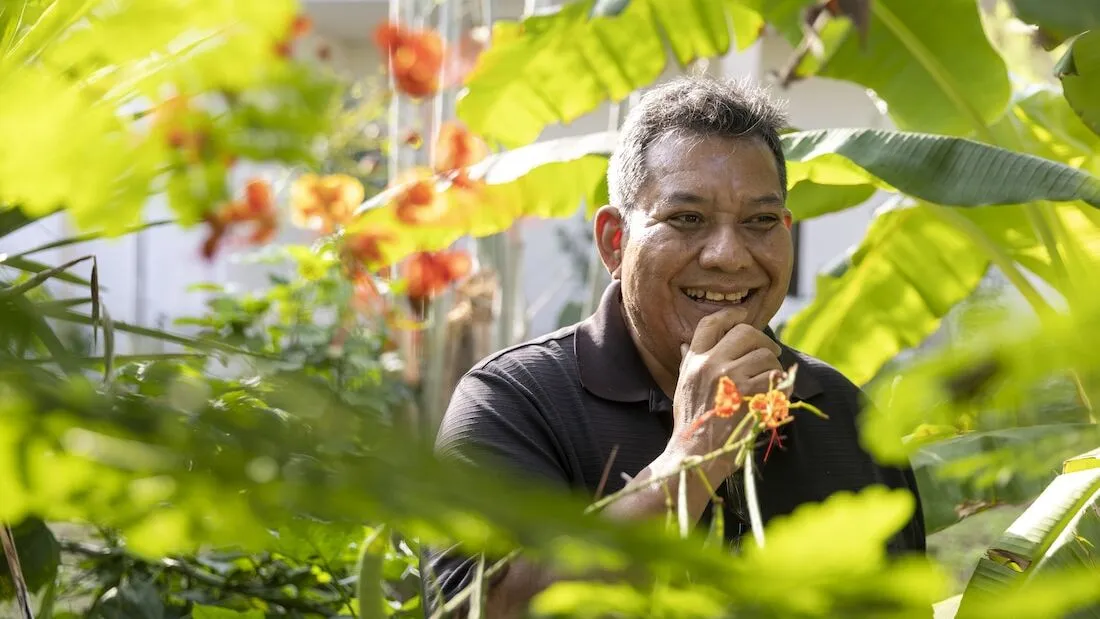4 Facts: Correcting Mental Health Myths
Mental health may often be an invisible burden, but it’s a heavy one, with widespread and long-lasting side effects. Here are four common myths about mental health and the truth behind the global crisis.

Mental health is one of the most misunderstood and neglected areas of public health. This has to change, considering the fact that close to 1 billion people suffer from mental health issues every day.
At Project HOPE, we’re working to ensure everyone has access to the care they need to heal and feel their best — and that includes mental health.
Here are four common myths, and the facts that tell the true story of the crisis.
Myth 1: COVID-19 started the mental health crisis.

Mental health was a global crisis even before COVID-19, affecting people in every country and on every continent — including health workers.
In 2019, almost half of all health workers surveyed in the U.K. reported experiencing negative mental health conditions. Another study that same year found that one-quarter of all health worker sickness absences in the country were for mental health conditions. In 2018, burnout among health workers was already considered “a significant public health problem.”
The pandemic has only made it worse. More than half of all health workers responding to the virus have experienced mental health issues and rates of burnout have skyrocketed. Among the general population, the first year of COVID-19 led to a 25% increase in the prevalence of anxiety and depression worldwide.
In response, Project HOPE has been providing mental health and resiliency trainings to help frontline health workers protect their own mental wellness while responding to COVID-19. The trainings, which are adapted from New York City Health + Hospitals’ HERO-NY training, will reach 55,000 health care workers in multiple languages across five continents.
Myth 2: Mental health conditions are more likely to occur in adulthood.

About half of all cases of mental illness begin by 14. Three-quarters of them develop before 25.
It is estimated that 1 in 7 adolescents and teens ages 10 to 19 experience mental health conditions, but most cases go undetected and untreated. This makes it critical to provide support early on, especially in conflict settings where children often make up many of those displaced — like the current Ukraine crisis.
With more than 5 million refugees having fled Ukraine — almost all of whom are women and children — Project HOPE has mental health specialists on the ground and is supporting local organizations to scale up mental health support for refugees in Poland, Romania, and Moldova, the three countries that have received the most refugees.
Myth 3: Gender doesn’t matter when it comes to mental health.

Women are more likely to experience mental health conditions. This includes women health workers, who make up nearly 70% of the global health workforce.
Throughout the pandemic, women health workers have reported higher rates of mental health issues like depression, anxiety, insomnia, and distress. Stressors that make them more prone to experiencing mental health conditions include higher risk of exposure and infection, increased workloads and decreased leadership, and greater caregiving responsibilities at home.
Through our global mental health and resiliency trainings, Project HOPE is supporting better mental health efforts for women health workers around the world. The overwhelming majority of the 1,000 health care workers who received our initial trainings were women. These participants are now cascading the training to reach tens of thousands more health workers, around 70% of whom are women.
Myth 4: There is no treatment for mental health conditions.

Not all mental health conditions are chronic; there are effective treatments, and research shows that there are many long-term benefits to getting attention and support as early as possible.
Yet 35% to 50% of people in high-income countries suffering from severe mental health issues go without it. In the U.S., nearly half of the 60 million adults and children living with mental health conditions don’t receive treatment. In low-income countries, the treatment gap is even greater: more than 75% of people experiencing mental health challenges never receive care.
Stigma and lack of resources are some of the greatest barriers to care. Mental health has been a sorely neglected area of global health — especially during conflict, natural disaster, or emergency, when the risk of mental health disorders can double. In 2020, governments spent just over 2% of their health budgets on mental health, and many low-income countries reported having fewer than 1 mental health worker for every 100,000 people.
Reducing stigma is an important part of expanding mental health care. Project HOPE is focused on increasing understanding, reducing stigma, and expanding mental health support services for health workers and communities when and where it’s needed most — especially in times of emergency and crisis, like Beirut, Haiti, and Ukraine, when mental health is pushed aside until basic needs like food, shelter, and safety are met.







